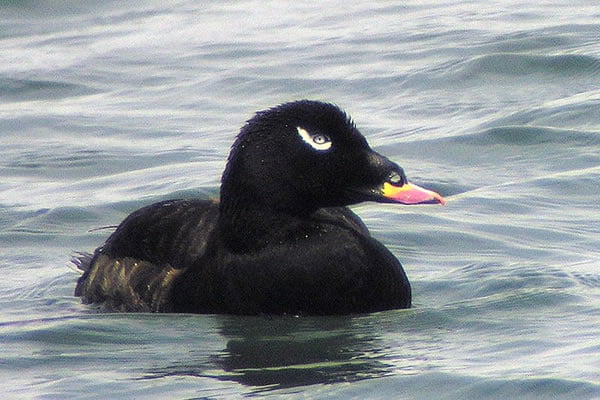Lead Institution(s): Ducks Unlimited Canada
Project Lead: Stuart Slattery
Collaborator(s): USFWS, DUC, GRRB, ECCC
Location: Northwest Territories
Focal Species: White-winged Scoter (Melanitta delgandi)
Project Description: The continental population of scoters (all three species combined) has declined by over 58% since 1978, from about 1.75 million to about 700,000 birds. We cannot reliably predict where limitations on these taxa have occurred or where they might be most responsive to management because we lack basic data on population dynamics. However, retrospective analyses examining correlations between declining scaup and scoter populations suggest that these birds share limiting factors in the NWT. We are using a combination of mark recapture techniques (including radio-marking pre-nesting females), nest searching, and brood observations to estimate demographic parameters and habitat use of scoters nesting in the Lower Mackenzie River watershed. This region is within the NWT, where over 65% of the scoter breeding population historically occurred, and declines approach 70% over the past 24 years. The project is also a sister study to our scaup breeding ecology work at the same site and will permit comparisons of demographic rates without confounding effects of spatial and temporal variation between studies. The primary objective of this study is to estimate vital rates associated with breeding in white-winged scoters, particularly breeding propensity, clutch size, nest success, annual and breeding survival of adult females, and duckling survival. Such information will help us develop population models to identify what demographic rate(s) constraints may be acting on, develop more advanced hypotheses about limiting factors, and assess sensitivity of population trajectory to changes in different vital rates to evaluate potential targets for management actions. Another objective is to test for effects of handling on pre-nesting female scoters using multi-year radios to better understand researcher-induced impacts on nesting effort. Multi-year radios should also allow us to assess return rates and increase annual sample size to obtain tighter estimates of demographic rates. Finally, we have tested effects of mock satellite transmitters on survival of scoters marked in the breeding season to help interpret results of the Alaskan scoter marking program, and are continuing collaborations to examine contaminants, reproductive energetics, and population delineation of white-winged scoters.
SDJV20 Interim Report FY02
SDJV20 Interim Report FY03
SDJV20 Interim Report FY04
SDJV20 Final Report FY05
Related Publications
Slattery, S. M., and R. G. Clark. 2019. Annual Survival in Female White ‐ Winged Scoters and Lesser Scaup. The Journal of Wildlife Management 83:1151–1162. https://doi.org/10.1002/jwmg.21674
Gurney, K. E. B., C. J. Wood, R. T. Alisauskas, M. Wayland, J.-M. A. DeVink, and S. M. Slattery. 2014. Identifying carry-over effects of wintering area on reproductive parameters in White-winged Scoters: An isotopic approach. The Condor 116:251–264. https://doi.org/10.1650/CONDOR-13-082.1
DeVink, J.-M. A., R. G. Clark, S. M. Slattery, and M. Wayland. 2008. Is selenium affecting body condition and reproduction in boreal breeding scaup, scoters, and ring-necked ducks? Environmental Pollution 152:116–122. https://doi.org/10.1016/j.envpol.2007.05.003
